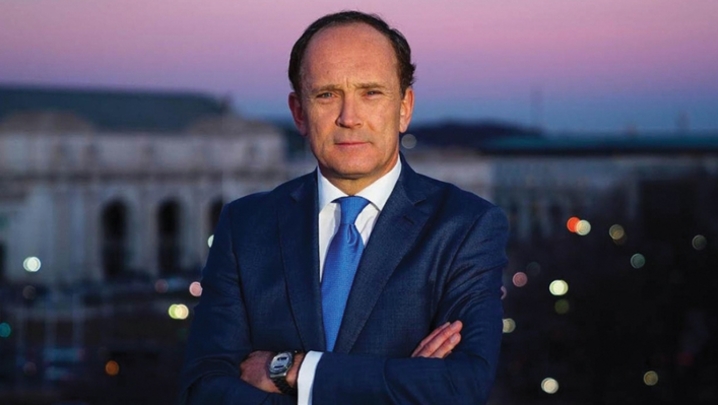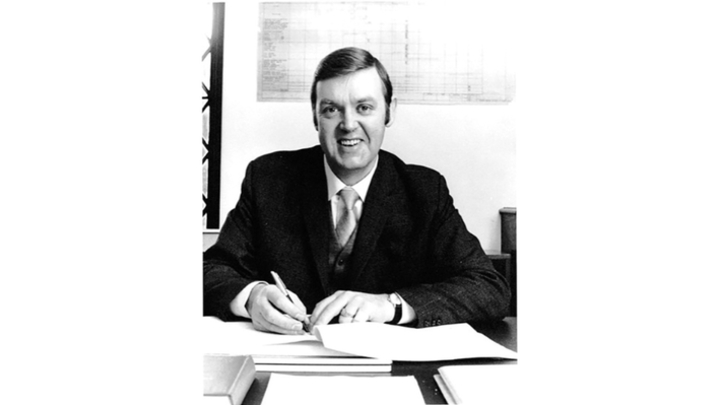Streaming services are pushing ahead of broadcasters to supply bigger, better pictures, reports Adrian Pennington
The television set and viewing of our childhood are gone.” So said Google’s President of Global Partnerships, Daniel Alegre, in his closing keynote to the broadcast equipment trade show NAB, adding: “A newer, better TV is rising from the ashes.”
While Alegre was referring to the rise of globally popular online content creators such as PewDiePie, the focus of the Las Vegas event was on the disruptive potential of internet technologies, higher picture resolutions and panoramic video streams.
Broadcasters such as CBS Sports, Rogers Media and Swisscom are starting to introduce premium Ultra-HDTV services, concentrating on live sports and entertainment. BT Sport, perhaps the world’s most experienced Ultra-HDTV live broadcaster, plans to ramp up its output – including its entire portfolio of English Premier League matches from next season – in anticipation of Sky’s introduction of its Sky Q Ultra-HDTV set-top box this year.
The bulk of new production technology at NAB was aimed squarely at Ultra-HDTV, in particular its 4K standard, which has four times the resolution of HDTV. Panasonic and Grass Valley unveiled 4K cameras, but the pick was probably, Sony’s HDC-4800. It offers a whopping 480 frames per second for 4K slow-motion. It also allows an operator to zoom in and extract an HD cut-out from the 4K image.
Sony has also produced a 4K version of its XDcam, a system popular for news reporting.
For drama, the focus is on enhancing the 4K image all the way through to the screen, with a wider colour gamut and better contrast achieved by retaining higher dynamic range (HDR) data captured by cameras. All new Netflix and Amazon commissions will use HDR.
Monitoring video for HDR content on-set has been extremely tricky, but the new Shogun Inferno from Australian manufacturer Atomos changes that. The £1,665 unit can record and play back 4K video at 60fps and supports 10 stops of dynamic range.
“HDR leaves even the most experienced video professional excited like a kid in a candy store - never before have you actually been able to monitor and shoot what you are actually seeing,” claimed CEO Jeromy Young.
Sony’s Oled monitor, already the most widely used for grading HDR content, has been joined by a larger, 55-inch model. The new Trimaster EL PVM-X550 can display four separate pictures in HDR HDTV for use in post-production houses or outside-broadcast trucks.
Ultra-HDTV: The next wave
Just a few years ago, 4K, an Ultra-HDTV format with four times the resolution of HDTV, looked like a giant technological leap with no supporting business case.
But even before it has spread beyond being a niche production standard, its successor is waiting in the wings: 8K has 16 times the resolution of HDTV and is on course to begin domestic transmission in Japan by 2020.
German play-out specialist Cinegy focused on 8K at NAB. ‘Most people don’t even have 4K televisions yet,’ admitted CEO Jan Weigner. ‘But, given the slew of 8K sets at the Consumer Electronics Show earlier this year, 8K matters, and the production buzz around it will just get louder.’
Cinegy’s compression technology is capable of handling multiple video streams in 8K and even 16K. ‘With our Daniel2, you can acquire, produce and broadcast in 8K today using off-the-shelf equipment. In fact, you can produce in 16K if you want to,’ said Weigner.
Canon showcased a series of 8K lenses and reference displays, and will initially target stadiums and the digital signage market. ‘This is technology that we’ve have been working on for 10 years, primarily for [Japanese broadcaster] NHK,’ said Canon Senior Fellow Larry Thorpe. ‘Some of our lenses will be in Rio [capturing Olympics content for NHK].… We’ll be there when people are ready for 8K.’
Ikegami and Hitachi both presented 8K broadcast cameras, already available commercially, while Panasonic demoed an 8K display.
IP: Change is gonna come
The use of internet-based protocols (IP) and generic computing resources may not be the most glamorous topic, but it is now a fundamental driver of every development in TV production and distribution.
Familiar broadcast tech brands are having to replace entire product lines of bespoke hardware with software that runs on commodity components.
‘Last year [2015] was the worst year in the market that I’ve ever experienced in this industry,’ declared Snell Advanced Media CEO Tim Thorsteinson at the company’s press event. ‘Customers are driving us to be interoperable. Adoption of IP technology is new, and there’s fear around that.’
Nonetheless, its software-based playout systems have seen four quarters of growth and it has released Go!, a system for remotely editing news and sports over the internet.
Video editing specialist Avid announced that it had allied with software company Adobe to tackle a perception that its proprietary systems are more closed than interoperable. Users of Avid’s work-share platform, MediaCentral, can now access material built with Adobe’s Premiere Pro application.
‘The industry is littered with siloed, disconnected products that haven’t changed,’ argued Avid CEO Louis Hernandez. ‘We’re the most open, extensible company here.’
Virtual reality: 360° video streaming
YouTube’s introduction of live-streamed panoramic videos was timed to coincide with NAB, where virtual-reality (VR) products were trending. Anyone with a compatible 360° camera and the ability to upload video at between 10Mb/s and 20Mb/s can now broadcast on the Google-owned platform.
Camera choice ranges from the $60,000 Nokia Ozo, which now includes live VR broadcasting capability, to the $500 ALLie Cam, which is the first to enable live-streamed 360° video on YouTube.
The momentum behind VR and, in particular, its application in live sports, is building. GoPro unveiled a six-camera Omni rig, complete with software to automatically stitch the cameras’ video feeds into an immersive image, for $5,000. The company also launched its own ‘broadcast-quality’, live-streaming service – LiveVR. This will soon be used by the MotoGP and MotoAmerica racing competitions.
NextVR trotted out what it billed as the first VR outside-broadcast truck, while Adobe updated its Premiere Pro editing software to make it easier to work with 360° media.
‘Television has always been a window into the world, but VR is really about transporting you into the world,’ said Fabrice Lorenceau, Co-founder of broadcast VR firm LiveLike. ‘Here, you can get the best ticket, choose your own experience, jump to a specific camera, and go to the best seat in the house.’




